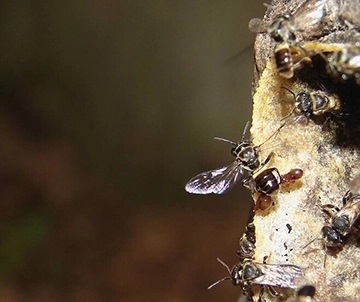SDM Project: Taiwan stingless bee field investigation and greenhouse pollination preliminary work
31.12.2018
SUBMITTED ORGANISATION
Hualien District Agricultural Research and Extension Station, Council of Agriculture, Executive Yuan. /Taiwa
PARTNER ORGANISATIONS
National Ilan University contact person: Yi-Lin Sophia Chen
Institution: NIU Department of Biotechnology and Animal Science, Professor ; EMA Program in College of Bioresources, Director
DATE OF SUBMISSION
December, 2018
REGION
Asia
COUNTRY
Chinese Taipei (Taiwan)
KEYWORDS
Taiwan stingless bee, bee pollination, nectariferous plant
FOCAL POINT
Cheng-Hua Sun, Hualien District Agricultural Research and Extension, Agricultural Extension section
Abstract
The original species of stingless bees early for the aboriginal rearing of the main pollen insects in Taiwan. Due to environmental changes, there is currently only the genus Trigona ventralishoozana. Trigona ventralishoozana main plant source include Roche salt wood, mulberry, tree, blooms and Alishan holly Taiwan endemic plants. But the modern people cut down the forest to change betel nut, tea or the use of a large number of chemicals (such as pesticides, pesticides, etc.), forcing the stingless bees to escape the original living environment. At present, Taiwan only about 30 stingless bee nests. Trigona genus in Indonesia and the Philippines has been widely used in greenhouse plant pollination. The results showed significant effect, we can see stingless bees have considerable development potential in the bee pollination. In order to assist in the rehabilitation and protection of pollinated bees, we will keep the sting bears together with the tree barrels. While the feeding area to retain the original forest, rich enough of the source of plant supply of stingless bees feeding environment, observe the pollination of the situation. The current observations of stingless bees live in good condition. If the population grows strong, can be artificial swarm, increase the number of bees, hoping to help farmers apply to greenhouse pollination. The project contributed to the better understanding the relation of stingless bee’s rehabilitation and landscapes. At present, the research develop related bee products (agricultural products or medicines) and increase the income to the farmers in Satoyama area.



